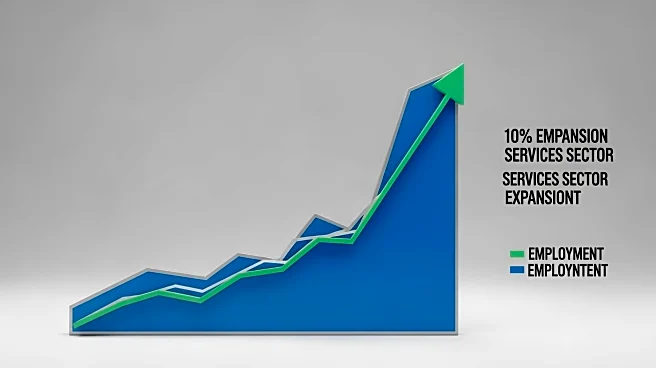What's Happening?
The U.S. job market is experiencing a paradoxical situation where the unemployment rate remains low, yet the pace of hiring is at its slowest in over a decade. Carly Kaprive, a project manager, exemplifies
this trend as she struggles to find employment despite submitting 700 applications. Factors such as interest rate uncertainty, tariffs, immigration issues, and the impact of artificial intelligence are contributing to this 'jobless boom.' Companies are hesitant to hire, even eliminating positions mid-interview. The unemployment rate stands at 4.3%, but the hiring rate has dropped to 3.2%, matching lows not seen since March 2013. The government shutdown has further complicated the situation by delaying crucial employment reports, leaving economists and the Federal Reserve uncertain about the job market's health.
Why It's Important?
This development is significant as it highlights a disconnect between the unemployment rate and the actual job market conditions. While those employed face fewer layoffs, the unemployed struggle to find work, creating an 'insider-outsider' dynamic. The hiring slowdown affects younger and older workers alike, with many experiencing extended periods of unemployment. The situation is exacerbated by the government shutdown, which has halted the release of key employment data, making it difficult for policymakers and economists to assess the job market accurately. The reluctance to hire, driven by economic uncertainties and technological shifts, poses challenges for job seekers and could impact consumer spending and economic growth.
What's Next?
The job market's future remains uncertain, with potential consequences depending on how companies respond to ongoing economic challenges. If large-scale layoffs increase, the situation could worsen for those already struggling to find employment. The government shutdown's resolution may provide clearer employment data, aiding in better policy decisions. Companies may need to adapt to technological advancements and economic shifts to stabilize hiring practices. Job seekers might continue to enhance their skills to remain competitive in a challenging market.
Beyond the Headlines
The hiring slowdown raises ethical and cultural questions about the role of technology in employment practices. The use of hiring software and impersonal recruitment processes can alienate job seekers, particularly older workers. The concentration of economic gains in sectors like AI may lead to disparities in job opportunities, affecting societal equity. Long-term shifts in employment patterns could redefine workforce dynamics, necessitating new approaches to education and skill development.











